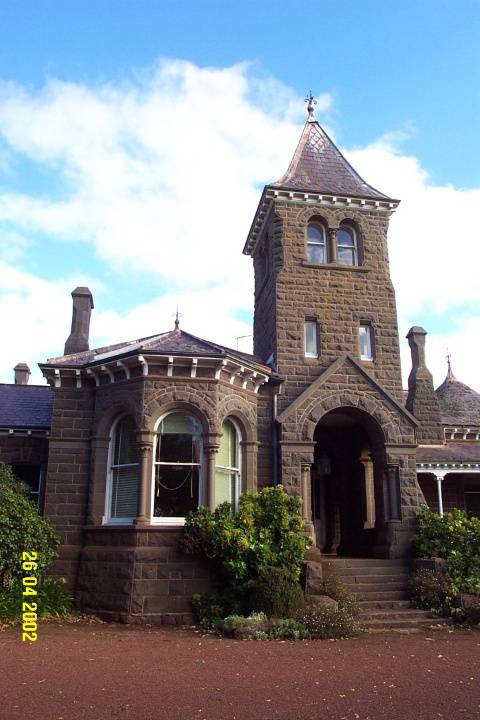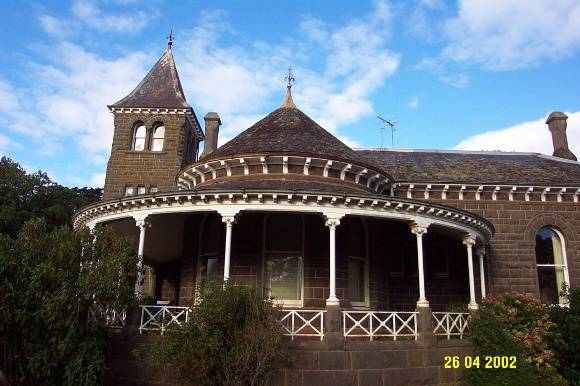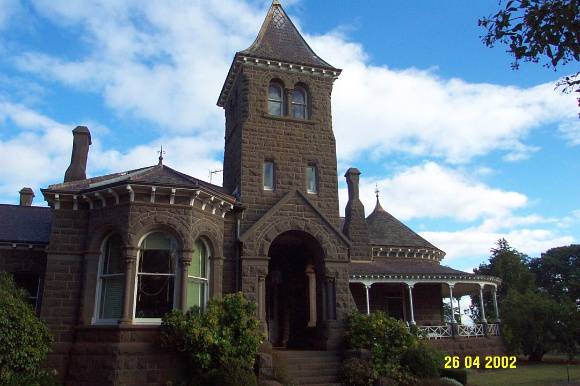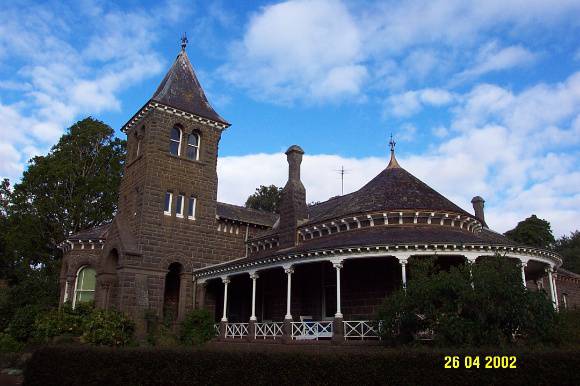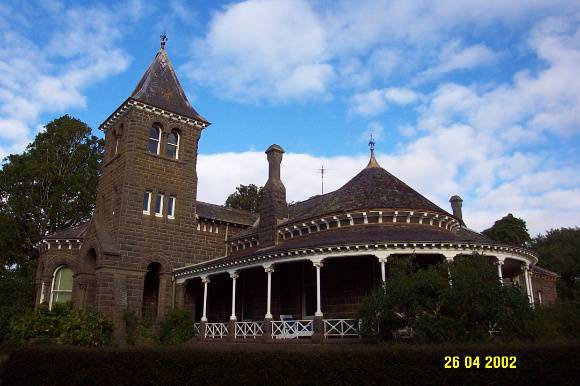| Back to search results » | Back to search page » |
|
KOLOR HOMESTEAD COMPLEX
Other NameCOLOR, COLLORRER, PURDEET STATION, MOUNT ROUSE LocationPenshurst-Warrnmabool Road, PENSHURST VIC 3289 - Property No 001
File Number86LevelStage 2 study complete |
|
Statement of Significance
What is significant?
The Kolor Homestead complex is located on the western shoulder of Mount Rouse, some three kilometres south of the township of Penshurst. The complex consists of a large picturesque bluestone homestead, surrounded by bluestone outbuildings. The complex is set in a well-established garden with extended parkland. The complex is approached by a sinuous driveway planed with a range of exotic deciduous and coniferous trees. In 1838, John Cox took up the land which was to become Kolor. At this time, it was known as the Mount Rouse run. After a short time, the Government evicted Cox, when the Mount Rouse Aboriginal Protectorate comprising 100 square miles centred on the mount and the adjacent permanent spring. By 1851, the Protectorate had failed, and the squatting licence was purchased by John Twomey, as Purdeet, or Kolor. The first homestead appears to have been located to the southwest of the Mount on the west side of the Penshurst-Warrnambool Road.
Twomey's son Daniel built the present house in 1868 to the design of Reed & Barnes architects. The design of the garden was strongly influenced by Edward La Trobe Bateman. The Twomey family was a major influence in the Western District, owning nearby Langulac and Banemore, and remained at Kolor until 1928. Reed & Barnes were leading architects in Melbourne and Victoria. Bateman was the foremost landscape designer in the colony until the late 1860s. The very skilful design, which integrates the villa into its landscape, makes Kolor perhaps the most picturesque homestead in the Western District. The use of a Romanesque revival version of the fashionable Italianate style is rare. It can be compared with the equally rare use of the Gothic revival style at Narrapumelap, Wickliffe by the architects Davidson & Henderson of Geelong. The house and garden of Kolor are in excellent condition overall and are substantially intact. The adjoining outbuildings, drive and yards form part of the homestead complex.
How is it significant?
The Kolor Homestead complex is of historical and architectural significance to the State of Victoria and the Southern Grampians Shire.
Why is it significant?
The Kolor Homestead complex is of historical significance as one of the earliest and most important squatting runs in the Western District, for its association with the failed Aboriginal settlement at Mount Rouse and the influential Twomey family. It is of architectural significance as one of the most important domestic designs by Reed and Barnes, for the very likely influence of Edward La Trobe Bateman, its rare use of the Romanesque revival style.
Group
Farming and Grazing
Category
Homestead Complex


